Don't wanna be here? Send us removal request.
Text
Has the Covid-19 pandemic changed the public perception of gaming?
Gaming: From Pastime to Social Haven
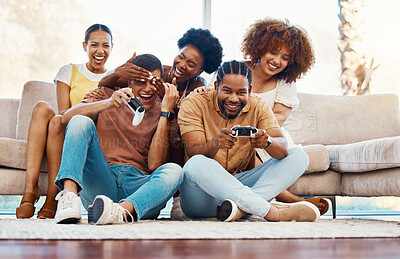
Throughout history, games have played an integral role in human society, serving as a source of entertainment, education, and social connection. The COVID-19 pandemic, with its unprecedented lockdowns and social distancing measures, has further amplified the significance of gaming, transforming it from a mere pastime into a lifeline for many.
Play: The Intrinsic Human Need
As an intrinsic human need, play is deeply rooted in our evolutionary history. It has been observed across various animal species as a crucial mechanism for exploration, learning, and adaptation. Similarly, play is pivotal in human development, fostering cognitive, social, and emotional growth throughout childhood.

Gaming: The Embodiment of Play in the Digital Realm
Video games, as digital manifestations of play, embody many of the core characteristics that define play:
Freedom: Gaming offers a realm of possibilities, allowing players to explore virtual worlds and engage in activities that may be limited or impossible in the real world.

Separation: Games establish distinct boundaries, creating a dedicated space and time for play, distinct from the demands of daily life.

Uncertainty: Gameplay outcomes are often unpredictable, introducing an element of surprise and challenge that fuels engagement.

Unproductivity: Gaming, in its purest form, is not driven by tangible outcomes or material gains. It exists for the sheer enjoyment of the experience.

Governance by Rules: Games operate within a defined set of rules, providing structure and a sense of order within the virtual realm.

Make-believe: Gaming often involves immersing oneself in a fictional world, temporarily suspending disbelief and embracing the imaginative possibilities that arise.

COVID-19: A Catalyst for Gaming's Transformation
Global lockdowns due to the COVID-19 pandemic led many people to games, e.g., Among Us, downloaded 100 million times in 2020, and the rise in popularity of Animal Crossing ensured Nintendo Switch’s profits (Lufkin, 2020). WHO changed its attitude toward online gaming “from warning of its dangerous and addictive character to praising its positive impact on socialising and coping with stress” (Kriz, 2020, p. 405). Reinforces the social elements of gaming as people look for safe ways to maintain social contact online (Griffiths, 2020). Game space (online) provided alternatives for social activities, including weddings, graduations, etc. (Lufkin 2020).
The COVID-19 pandemic emphasises social isolation and physical distancing, creating unique challenges for human connection. In this context, gaming emerged as a powerful tool for maintaining social bonds and fostering community.
Digital Communities: Virtual Worlds of Social Interaction

Online gaming communities flourished during the pandemic, providing individuals with a means to connect, socialize, and engage in shared experiences despite physical separation. These virtual worlds offered a sense of belonging, camaraderie, and shared purpose, alleviating loneliness and isolation.
Gaming's Broadened Appeal: From Gamers to Casual Players

The pandemic also witnessed a significant shift in the perception of gaming, broadening its appeal beyond traditional gamers to encompass a wider audience. As individuals sought new entertainment and connection during lockdowns, gaming emerged as an accessible and engaging option, attracting individuals from diverse backgrounds and ages.
The Evolving Public Perception of Gaming: A Positive Shift
The COVID-19 pandemic has undoubtedly altered the public perception of gaming, moving it away from stereotypes and misconceptions towards a more nuanced and positive understanding. Gaming is no longer solely associated with isolated individuals spending countless hours glued to screens. Instead, it has been recognized as a multifaceted phenomenon that offers entertainment, education, social connection, and a sense of community.
Conclusion: Gaming's Enduring Significance

As society navigates the post-pandemic landscape, gaming is poised to retain its newfound significance. While the world gradually transitions back to a more normalized state, the benefits and positive aspects of gaming are likely to endure. Gaming has proven its ability to provide entertainment, education, social connection, and a sense of community, making it an invaluable asset in promoting well-being and fostering human relationships.
References
Griffiths, M., 2020. Coronavirus: making friends through online video games. [online] The Conversation. [Accessed 17 November 2023]. Available at <https://theconversation.com/coronavirus-making- friends-through-online-video-games-134459>
Kriz, W. C. (2020) ‘Gaming in the Time of COVID-19’, Simulation & Gaming, 51(4), pp. 403–410. doi: 10.1177/1046878120931602.
Lufkin, B., 2020. How online gaming has become a social lifeline. [online] BBC, [Accessed 17 November 2023]. Available at <https://www.bbc.com/worklife/article/20201215-how-online-gaming-has- become-a-social-lifeline>
0 notes
Text
Can crowdsourced information during times of crisis (e.g. pandemic, natural disasters) mobilise the public into action (e.g. get to safety, assist those in need, communicate important information, etc.)?
Crowdsourcing for Crisis Response: Mobilizing the Public into Action

Access to timely and accurate information can be a lifeline in times of crisis, such as a pandemic or natural disaster. Crowdsourcing, the practice of gathering information from a large group of people, has emerged as a valuable tool for mobilizing the public into action during times of crisis. By harnessing individuals' collective knowledge and actions, crowdsourced information can provide real-time updates, identify needs, and coordinate relief efforts, enabling communities to respond effectively and recover from disasters.
The Power of Crowdsourced Information
Crowdsourced information can be collected through various channels, including social media platforms, dedicated websites, and mobile applications. These platforms allow individuals to share their experiences, report on local conditions, and request assistance, creating a rich data stream that can inform emergency response strategies and resource allocation.

Harnessing the Collective Wisdom of the Crowd
During the 2011 South East Queensland floods, ABC's @ABCemergency Twitter account became a central hub for crowdsourced information, providing real-time updates on flood conditions, road closures, and evacuation routes. The account's tweets were widely shared and retweeted, amplifying the reach of critical information and enabling individuals to make informed decisions about their safety.
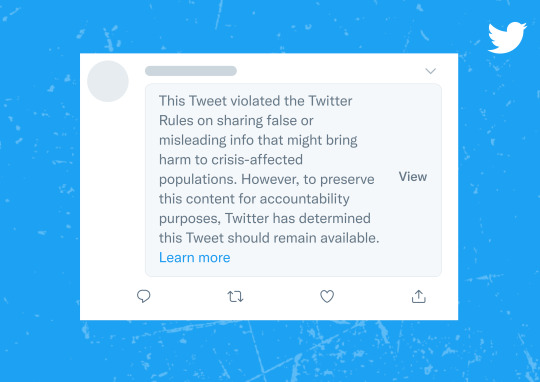
Mobilizing Public Action: From Information to Action
Crowdsourced information can also empower the public to take action and support those in need. By sharing firsthand accounts of local conditions, individuals can identify gaps in relief efforts and mobilize their resources to provide assistance. For instance, during the COVID-19 pandemic, crowdsourced maps and online platforms connected volunteers with individuals needing food, supplies, and transportation. https://www.ifrc.org/press-release/red-cross-providing-life-saving-assistance-hundreds-thousands-displaced-ukraine

Case Studies: Crowdsourcing in Action
The 2010 Haiti earthquake and the 2015 Nepal earthquake provide compelling examples of how crowdsourcing can mobilize the public into action. In Haiti, crowdsourced mapping tools like OpenStreetMap and Crisis Map were crucial in identifying areas requiring immediate attention and coordinating relief efforts. Similarly, in Nepal, crowdsourced information helped identify the most affected areas, coordinate search and rescue efforts, and direct relief supplies to those in need. https://www.floodmanagement.info/crowdsourcing-and-crisis-mapping-in-flood-management/
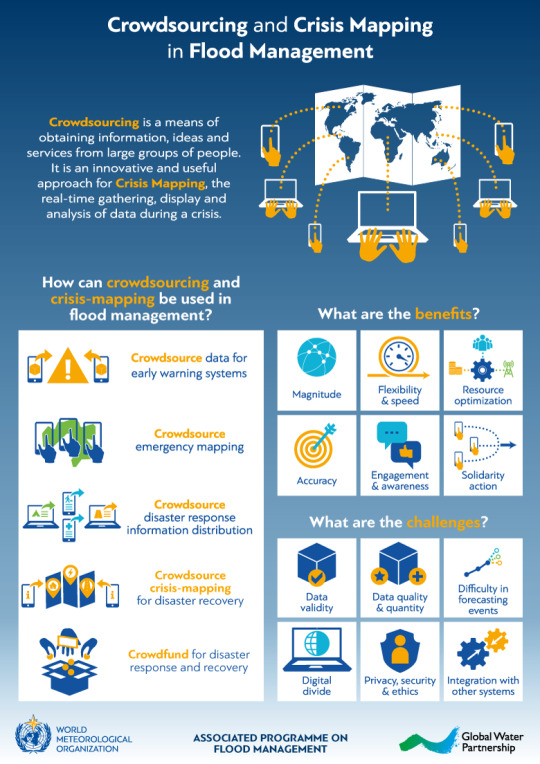
Addressing Challenges and Ensuring Accuracy
While crowdsourcing offers immense potential for mobilizing the public in crises, addressing the associated challenges is essential. The rapid spread of misinformation and disinformation on online platforms poses a significant threat, requiring effective filtering and verification mechanisms. Additionally, ensuring the privacy and security of personal information shared through crowdsourced media is paramount.
Recommendations for Effective Crowdsourcing in Crisis
To maximize the effectiveness of crowdsourcing in times of crisis, consider the following recommendations:
Establish clear guidelines for reporting information and sharing content.
Implement robust verification mechanisms to filter out misinformation and disinformation.
Protect the privacy and security of personal information collected.
Encourage collaboration and coordination among organizations using crowdsourced information.
Integrate crowdsourced data into official response strategies and decision-making processes.
Conclusion: Crowdsourcing as a Catalyst for Collective Resilience

Crowdsourcing has emerged as a powerful tool for mobilizing the public into action during times of crisis. By harnessing individuals' collective knowledge and actions, crowdsourced information can provide valuable insights for emergency response efforts, empower individuals to take action, and facilitate the coordination of relief efforts. As we navigate an increasingly interconnected world, crowdsourcing is poised to play an even more critical role in building resilient communities and responding effectively to future crises.
0 notes
Text
Are public health campaigns in social media more of a one-way communication than a conversation?

Social media has become an increasingly powerful tool for public health communication. With its ability to reach large audiences quickly and easily, social media can spread awareness about important health issues, promote healthy behaviours, and connect people with resources. However, there is debate about whether public health campaigns on social media are more one-way communication than a conversation. Some argue that these campaigns often use a "top-down" approach, pushing information out to audiences without much opportunity for feedback or engagement.
Others argue that social media provides a unique opportunity for public health organizations to converse with their audiences. Public health organisations can create a more engaging and two-way communication channel by using social media platforms to share stories, ask questions, and respond to comments.
Which is the right approach?
The answer is likely that it depends on the specific campaign and the target audience. In some cases, a more one-way approach may be more effective, particularly if the goal is to simply disseminate information. However, in other cases, a more conversational approach may be more effective, particularly if the goal is to build relationships and encourage behavior change.
Here are some things to consider when developing a public health campaign on social media:
Your target audience: Who are you trying to reach with your campaign? What are their needs and interests?
Your campaign goals: What do you hope to achieve with your campaign? Are you trying to raise awareness, promote healthy behaviours, or connect people with resources?
The type of content you will share: What kind of content will be most engaging for your target audience? Will you be sharing videos, infographics, or simply text-based posts?
Here are some examples of public health campaigns that have used social media effectively to create a conversation:
The Centers for Disease Control and Prevention (CDC)'s "Tips from Former Smokers" campaign

This campaign used real-life stories of former smokers to discourage people from starting to smoke and encourage smokers to quit. The campaign was very successful, generating a lot of conversation on social media. https://www.cdc.gov/tobacco/campaign/tips/resources/feature/index.html
The Man Therapy campaign

This campaign aimed to encourage men to talk about their mental health. The campaign used a variety of social media platforms to share stories of men who had struggled with mental health issues, and it encouraged men to seek help if they were working https://mantherapy.org/
The Partnership For Drug-Free Kids' Above the Influence campaign

This campaign used social media to reach out to young people and encourage them to make healthy choices about drugs and alcohol. The campaign used a variety of social media platforms to share stories of young people who had been negatively affected by drugs and alcohol, and it encouraged young people to speak up against drug use. https://drugfree.org/newsroom/news-item/ondcps-above-the-influence-campaign-wins-effie-award/
Navigating the Digital Landscape in Times of Crisis: Lessons from COVID-19 and the Future of Digital Communication

The COVID-19 pandemic has profoundly impacted our lives, disrupting social norms, altering communication patterns, and exacerbating existing digital divides. The sudden shift to remote work, education, and social interactions forced a rapid adoption of digital tools, highlighting the critical role of technology in modern society. While digital communication has facilitated connection and continuity during this unprecedented period, it has also amplified the challenges of digital inequality and raised concerns about the ethical implications of online interactions. https://www.thestar.com.my/tech/tech-news/2020/03/29/covid-19-why-the-novel-coronavirus-became-a-social-media-nightmare
Digital Communication During COVID-19: A Double-Edged Sword
The pandemic's physical distancing measures and lockdowns necessitated a reliance on digital communication channels, leading to a surge in video conferencing platforms, social media, and online messaging services. This shift in communication patterns brought about both positive and negative consequences. https://journals.sagepub.com/doi/full/10.1177/2056305120948255#articleCitationDownloadContainer
Positive Impacts:
Bridging Distances and Maintaining Social Connections: Digital communication tools enabled individuals to stay connected with loved ones, friends, and colleagues despite physical separation.
Facilitating Remote Work and Education: The pandemic accelerated the adoption of remote work and education, allowing individuals to continue their professional and academic pursuits from home.
Enhancing Access to Information and Services: Digital platforms provided a crucial source of information about COVID-19, enabling individuals to make informed decisions about their health and well-being.
Negative Impacts:
Exacerbating Digital Inequality: The reliance on digital communication highlighted the disparities in access to technology and digital skills, particularly among marginalized communities.
Spreading Misinformation and Disinformation: The rapid spread of information online, coupled with the lack of adequate fact-checking, led to the proliferation of misinformation and disinformation, posing a significant public health threat.
Impact on Mental Health and Well-being: Excessive use of social media and digital platforms during the pandemic has been linked to increased anxiety, depression, and social isolation.
Implications for Digital Inequality and Future Research
The COVID-19 pandemic has underscored the urgency of addressing digital inequality, ensuring that everyone has access to affordable, reliable internet connectivity and the necessary digital literacy skills to fully participate in the digital society.
Future research should focus on:
Understanding the long-term impact of COVID-19 on digital communication patterns and behaviors.
Developing effective strategies to bridge the digital divide and promote digital inclusion.
Examining the ethical implications of online communication and misinformation, particularly in times of crisis.
Investigating the impact of digital communication on mental health and well-being.
The Future of Digital Communication: Building a More Equitable and Responsible Online Landscape

The COVID-19 pandemic has transformed how we communicate, highlighting the importance of digital technologies in our lives. As we move forward, it is crucial to ensure that the digital landscape is equitable, accessible, and responsible. By addressing digital inequality, promoting responsible online behaviour, and prioritizing user well-being, we can harness the power of digital communication to create a more just and connected world.
Conclusion
Social media can be a powerful tool for public health communication, but it is essential to use it effectively. By using a conversational approach and engaging with your audience, you can create public health campaigns that are more effective and meaningful. There are several ethical considerations to be aware of when using social media for public health communication. For example, ensuring that any information shared is accurate and up-to-date and that any personal information collected is handled responsibly is essential.
0 notes
Text
"Digital Citizenship: Empowering Activism and Protest in the Digital Age"
Digital citizenship is the responsible use of digital technologies to participate in society, communicate with others, and create and consume information. Digital activism is a form of activism that uses digital technologies to promote social or political change. It can take many forms, such as online petitions, social media campaigns, and crowdfunding. Digital protest is a form that uses digital technologies to express dissent or make demands. It can take many forms, such as online boycotts and digital demonstrations.

The Rise of Digital Activism and Protest

Digital activism and protest have become increasingly popular due to the widespread adoption of digital technologies, such as smartphones and social media. These technologies make it easier for people to connect with each other and organize around shared causes, as well as to amplify their voices and reach a global audience. Digital activism and protest have achieved various social and political changes recently. For example, digital activism was instrumental in the Arab Spring uprisings and the Black Lives Matter movement. Digital protest has also been used to raise awareness of climate change, promote gun control, and demand LGBTQ+ rights.
The Power of Digital Activism and Protest
Digital activism and protest offer several advantages over traditional forms of activism and protest.
Accessibility and inclusivity
Digital activism and protest are more accessible and inclusive than traditional forms of activism and protest for several reasons. They do not require participants to be physically present at a specific location. This means that people with disabilities, people who live in remote areas, and people who have limited time or resources can all participate in digital activism and protest. Digital activism and protest are often more affordable than traditional forms of activism and protest. For example, it does not cost anything to start an online petition or to share a social media post.
Efficiency and effectiveness
Digital activism and protest are more efficient and effective than traditional forms for several reasons. First, digital technologies allow activists to reach a larger audience more quickly and easily. For example, a viral social media post can be seen by millions of people in a matter of hours. Second, digital technologies allow activists to mobilize support more efficiently. For example, activists can use online tools to organize events and protests and to collect donations.

Adaptability and creativity
Digital activism and protest are more adaptable and creative than traditional forms of activism and protest for several reasons. First, digital technologies can be used to create new and innovative forms of activism and protest. For example, activists have used social media to create flash mobs, viral videos, and online petitions. Second, digital technologies allow activists to respond quickly to current events and to emerging social issues. For example, activists can use social media to organize protests police brutality or to raise awareness of climate change.
Examples of the power of digital activism and protest
There are many examples of the power of digital activism and protest. Here are a few:
The Arab Spring uprisings were sparked and fuelled by social media platforms like Facebook and Twitter.
The Black Lives Matter movement has used social media to raise awareness of police brutality and to demand justice for victims of police violence.
The #MeToo movement has used social media to give a voice to survivors of sexual harassment and assault.

Challenges and Opportunities
Despite the many advantages of digital activism and protest, there are also some challenges to be aware of. One challenge is that digital platforms can be used to spread misinformation and propaganda. Another challenge is that governments and corporations can use digital technologies to censor and monitor dissent.
However, despite these challenges, digital activism and protest offer a unique opportunity for people to engage in civic participation and make a difference in the world. By using digital technologies responsibly and strategically, individuals and groups can raise awareness of important issues, mobilize support, and demand change.

How to Get Involved

If you are interested in getting involved in digital activism and protest, there are several things you can do. First, educate yourself about the issues you care about. The more you know, the more effective you can be in advocating for change. Second, could you find a community of activists who share your interests? There are many online and offline communities where you can connect with other activists and learn from their experiences. Third, use digital technologies to raise awareness and mobilize support. You can do this by sharing articles, videos, and other resources on social media, organizing events and protests, and contacting your elected officials.

Conclusion
Digital activism and protest are powerful tools for change in the 21st century. By using digital technologies responsibly and strategically, individuals and groups can raise awareness of important issues, mobilize support, and demand change. To make a difference, consider participating in digital activism and protest today.
0 notes
Text
‘Is blogging still relevant in the age of TikToks and Instagram?’;
Hey there, fellow internet wanderer! 🌟 Have you ever wondered about the evolution of online content and how platforms like TikTok and Instagram have taken the digital world by storm? They've undeniably changed how we consume and create content, leaving many questioning the relevance of good old-fashioned blogging. The relevancy of blogging, in contrast to short digestive video media, i.e. tiktoks or reels, is similar to that of newspapers and magazines in an era of digital information at one's fingertips. So, let's dive right in and explore whether blogging still holds its own in this fast-paced age of snappy videos and stunning visuals.
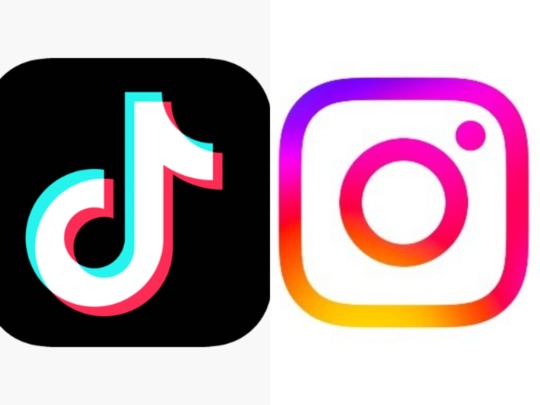
The Rise of Micro-Content
TikTok, with its short, engaging videos, and Instagram, with its visually captivating images, have undeniably changed the game regarding content consumption. Their content format is tailored to suit our fast-paced lives, providing bite-sized information and entertainment. The attention span of the modern audience is shrinking, partly due to the sheer volume of information available at our fingertips. Micro-content platforms have recognized this shift and optimized their content to cater to this trend. They present information concisely and visually appealingly, making it easier for users to absorb and enjoy.
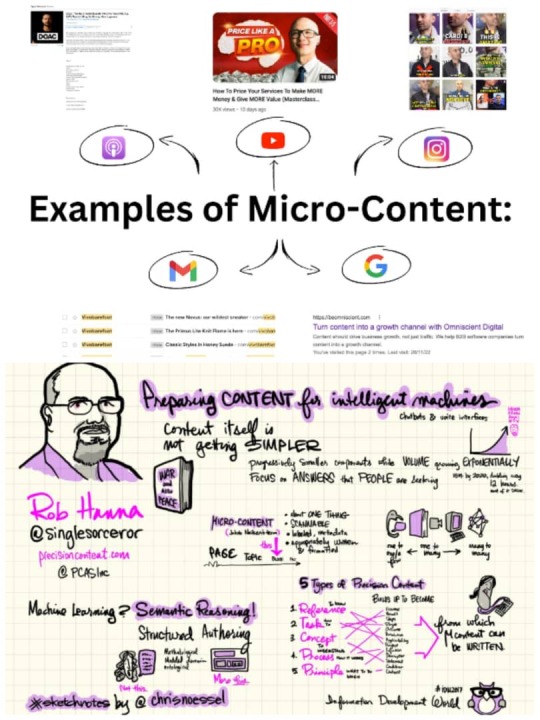
Imagine scrolling through your feed and, in a matter of seconds, you've laughed at a 15-second comedy sketch on TikTok or been inspired by a stunning photograph on Instagram. These platforms have mastered grabbing and retaining attention within a few moments. However, does this rise of micro-content signal the end of traditional, long-form blogging? Not quite.
Blogs: The In-Depth Experience
While micro-content provides a quick fix for entertainment or information, blogs offer a more substantial and in-depth experience. They allow for a deeper topic exploration, providing a comprehensive understanding beyond the surface. Blogs often incorporate research, personal experiences, and a variety of perspectives, offering readers a holistic view of the subject matter. The narrative nature of blogs allows for storytelling, which can be a powerful tool to engage and captivate readers. It's akin to having a conversation where the writer shares their thoughts, insights, and knowledge conversationally, fostering a strong connection with the reader. Blogging is as effective a marketing tool as ever. In fact, it's supercharged. A recent study by Data Box, “The Shift in Your Content Marketing Mix: 25 Marketers On What's Changed in 2 Years”, showed that 68% of marketers find blogging more effective than they did 2 years ago. https://nealschaffer.com/are-blogs-still-relevant-in-2019/#:~:text=Now%2C%20none%20of%20that%20has,they%20did%202%20years%20ago.
So, despite the trend towards shorter and more visually appealing content, the unique value of blogs still needs to be addressed.
Niche Expertise
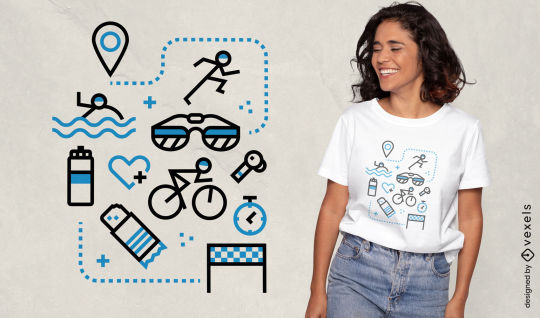
One of the remarkable aspects of blogs is their ability to cater to specific niches. Whether it's technology, travel, health, or lifestyle, there's a blog out there for nearly every interest imaginable. This specialization enables bloggers to delve deep into their chosen field, offering expertise and insights that might not be available in micro-content.
For instance, a tech blog could provide detailed reviews of the latest gadgets, comparing features, performance, and usability in a way that a 15-second TikTok video simply cannot.
SEO and Discoverability
Blogs have a significant edge in search engine optimization (SEO). Their longer format allows for integrating keywords, backlinks, and other SEO strategies that improve discoverability. If you're searching for detailed information on a topic, a blog post will appear at the top of your search results, providing the precise insights you want.
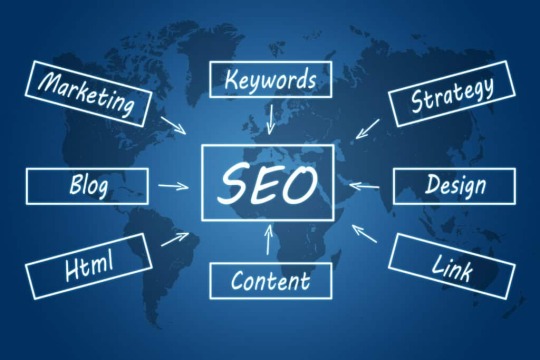
Authenticity and Connection
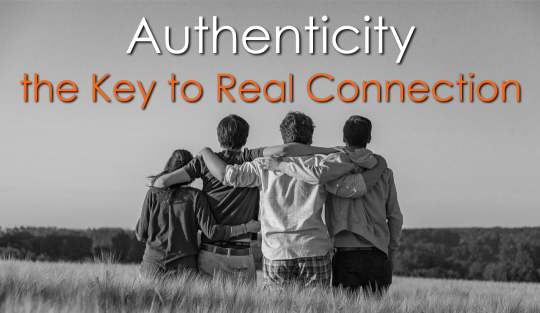
Blogging offers a more authentic and personal connection between the creator and the audience. Through blogs, writers can share their thoughts, experiences, and emotions genuinely and heartfeltly. Readers, in turn, feel a deeper connection to the creator, which can be challenging to achieve through short-form content. Authenticity and genuine connection are still highly valued in this digital age.
The Power of Integration
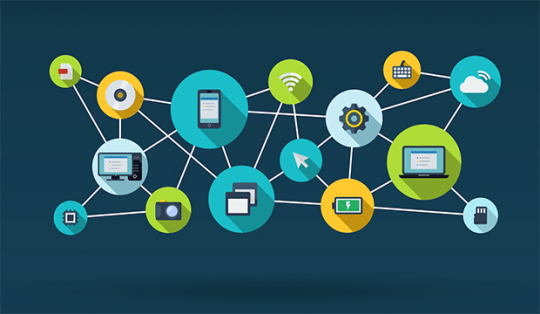
In this ever-evolving digital landscape, integration is critical. Many successful content creators use a combination of platforms to maximize their reach and engagement. A well-rounded strategy might involve creating short, attention-grabbing videos on TikTok or Instagram and linking to a blog post for a more comprehensive experience. It's about finding the right balance and leveraging each platform's strengths.
The Verdict: Blogging Endures
In conclusion, blogging is not only relevant but also vital in the age of TikToks and Instagram. It provides a unique and necessary space for in-depth exploration, niche expertise, SEO-driven discoverability, authenticity, and integration. While micro-content has its allure, blogging offers a distinct and irreplaceable value that continues to attract and engage a dedicated audience.
So, whether you're a content creator or an eager information seeker, blogs remain a treasure trove of knowledge and a canvas for creativity. Embrace the ever-evolving digital world, but never underestimate the timeless power of a well-crafted blog post. Happy reading and happy blogging! 📚✍️
3 notes
·
View notes